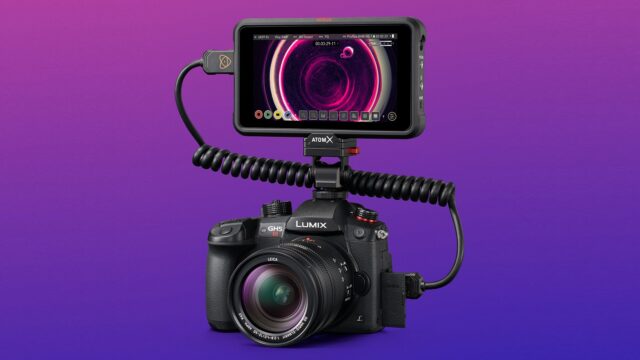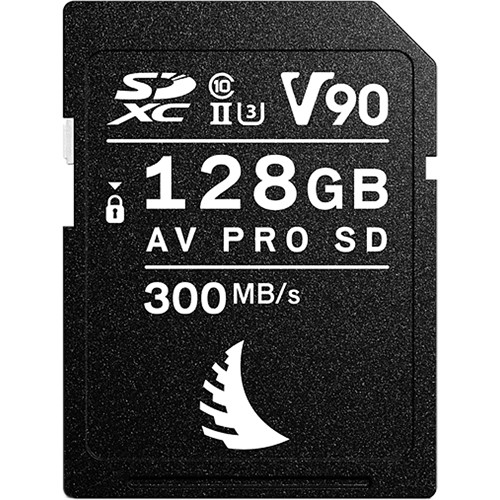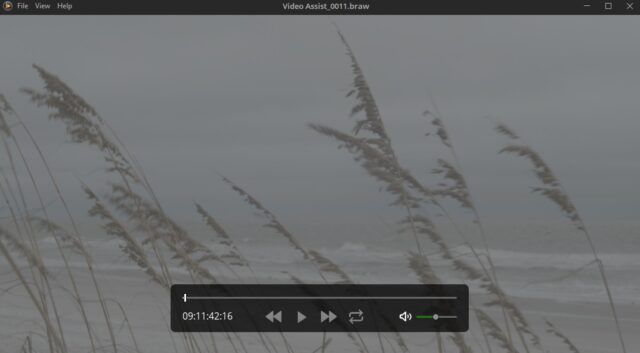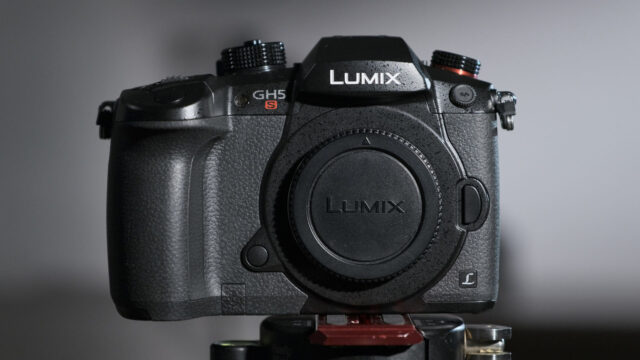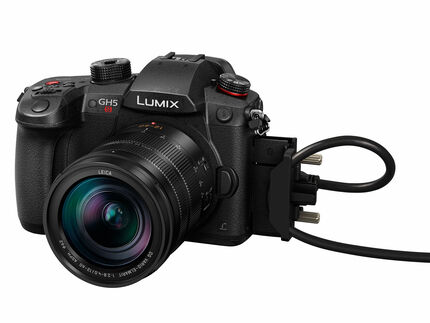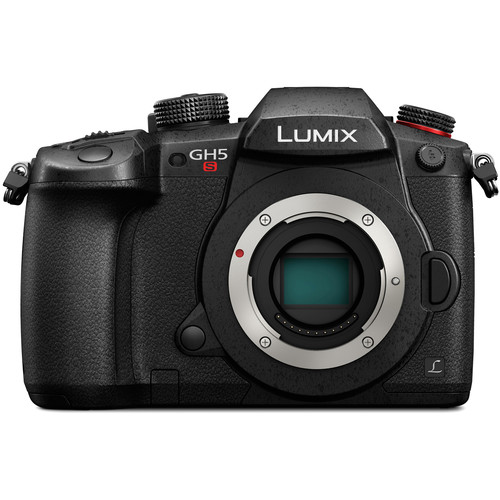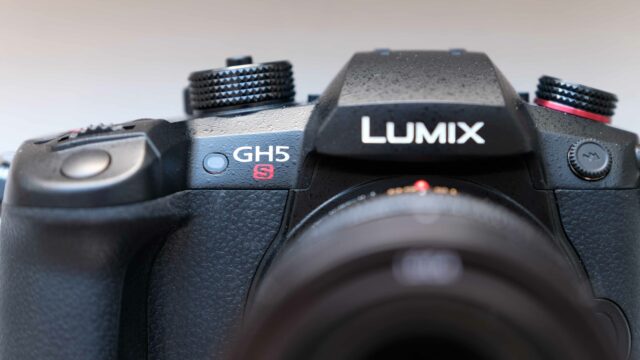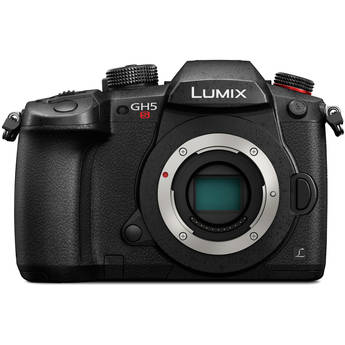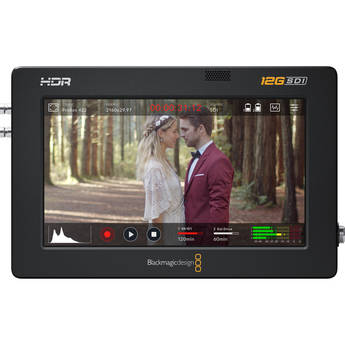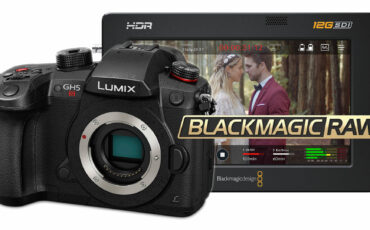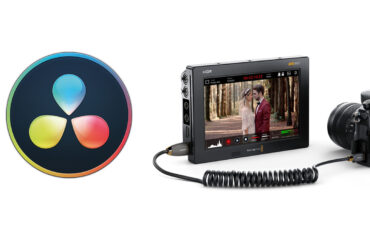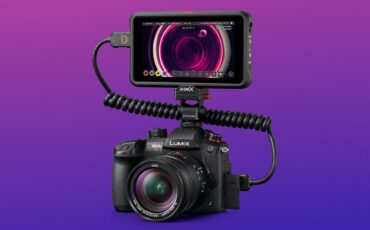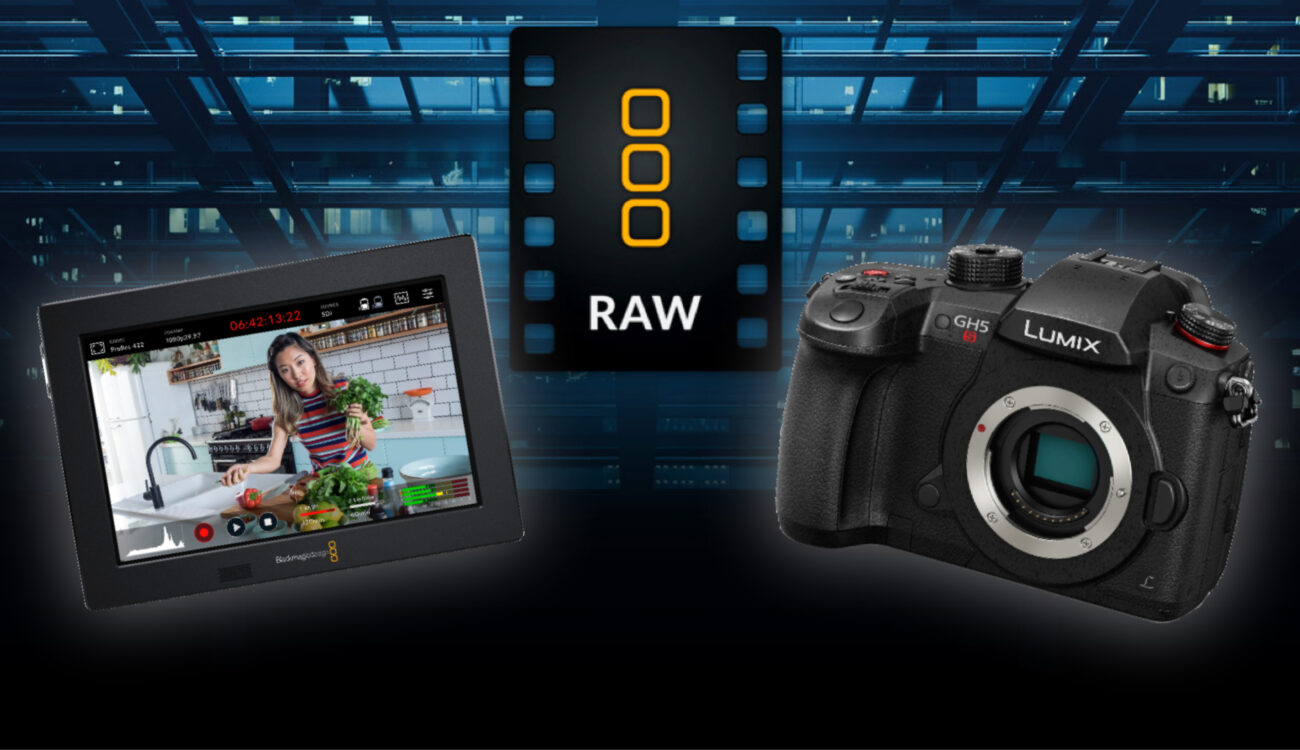
With the recent firmware 2.2 update to the LUMIX GH5S and the firmware 3.5 update to the Video Assist 12G HDR, Panasonic and Blackmagic Design added external BRAW recording to the GH5s. Can BRAW breathe new life into this aging camera? Let’s find out!
Sandwiched in between the introduction of the GH5 Mark II and the upcoming launch of the GH6, Panasonic casually released two major firmware updates to the GH5S, mere footnotes that might otherwise have grabbed banner headlines on their own.
With firmware 2.0, Panasonic added ProRes RAW support and improved auto focus to the GH5S. The recent release of firmware 2.2 enables the GH5S to record Blackmagic RAW to either of the two Video Assist 12G HDR models.
Perhaps not since Sony unlocked 4K on the F5 or Blackmagic enabled BRAW on the Pocket 4K has a manufacturer so ingratiated itself with users of an older camera at risk of becoming long in the tooth.
Panasonic EVA1 Camera Primer
While C200 owners have gone blue in the face waiting for Canon to add an internal 10-bit 422 codec, GH5S owners can breathe a huge sigh of relief their once flagship LUMIX camera can now output RAW to external recorders.
RAW Wars: The Force Unleashed
With ProRes RAW and Blackmagic RAW (BRAW) respectively, Apple and Blackmagic Design have unleashed the power of Hollywood for budget filmmakers. As battles rage as to which format is superior, Gerald Undone and Jordan Drake’s findings suggest the competing RAW formats are similar in terms of achievable results, though their implementations and workflows differ.
For many, the selection of RAW format will come down to personal preference. For those on Macs or editing in Premiere, maybe ProRes RAW makes more sense. As a Windows user editing in Resolve, Blackmagic RAW was a natural choice for me.
LUMIX GH5S – size matters
The biggest (or should I say tiniest?) surprise is how small the file sizes of various Blackmagic RAW constant bitrate options are in comparison to ProRes RAW. A single 64GB SDXC card can record up to 39 minutes of DCI 4K BRAW footage with 12:1 compression at 23.98 fps.
Some may favor the Ninja V over the Video Assist 12G HDR due to the lower cost per gigabyte of SSD drives versus some SDXC cards, but in my mind this is a bit of a red herring. The more space-efficient Blackmagic RAW format does not require as much storage as ProRes RAW. Plus, the Video Assist 12G HDR also works with SSD drives via an included USB-C interface.
Though not supported, I successfully tested PNY UHS-I 64GB SDXC cards up to and including DCI 4K BRAW using 5:1 compression. Officially supported ProGrade UHS-II V60 64GB SDXC cards worked flawlessly up to and including constant quality Q0, the best and most intensive BRAW format available on the Video Assist 12G HDR.
While Blackmagic RAW’s initial appeal to me was for commercial and narrative projects, I’m now seriously considering BRAW for documentary work as well. The ability to write 12-bit BRAW files to affordable SDXC cards with long record times is a real game-changer.
It’s fair to say the GH5S has indeed been reinvented three years later.
Like a hot knife through butter
An equally pleasant surprise is how smoothly BRAW footage plays back on Windows. Davinci Resolve 17.4 eats BRAW files for breakfast, playing back and scrubbing DCI 4K footage without a hiccup. The BRAW player on Windows is just as nimble, though a minor gripe is the inability to add a viewing LUT.
After installing the firmware updates on the GH5S and Video Assist 12G HDR, I took them both for a spin around the block, capturing some handheld day and night exteriors. The sample footage is straight out of the camera, with no grading or noise reduction.
I shot with constant bitrate at 12:1 compression, the lowest quality BRAW option on the Video Assist 12G HDR. With only a conversion LUT applied, the 12-bit footage acquits itself nicely, random run-n-gun compositions notwithstanding.
Studio Sumizoon has posted some more GH5S BRAW footage definitely worth checking out.
The fine print
Panasonic is known for including as standard frills other manufacturers reserve for only their higher-end cameras. One such feature on the GH5S is the ability to shoot in true 24 fps. However, HDMI RAW data output is not available when the system frequency is set to 24Hz, so 23.976 fps will have to suffice.
As many critics have pointed out, unlike with R3D files, white balance and tint Camera Raw adjustments in Resolve are not available with BRAW files recorded over HDMI. The only setting not grayed out is the exposure slider.
The lack of Camera Raw controls is a disappointment, but with 12-bit BRAW files you can still push and pull the regular temp and tint adjustments pretty hard without the footage looking any worse for wear.
Is the LUMIX GH5S still a good investment in late 2021?
If you already own a GH5S, shooting in BRAW or ProRes RAW is a no-brainer. Hats off to Panasonic, Blackmagic Design and Atomos for extending the relevance of this once flagship LUMIX camera well beyond its original sell-by date.
But if you’re in the market for a budget RAW-capable camera, is the GH5S still a wise investment compared to other options on the market or coming soon? To answer this question, let’s delve deeper into some of the other features already packed into this micro four-thirds marvel.
I can see clearly now
Panasonic has long received a bum rap for lackluster autofocus performance in LUMIX cameras. Though unlikely to unseat autofocus titans Canon or Sony anytime soon, Firmware 2.0 ushered in a marked advancement in the autofocus realm, bringing the GH5S up to speed with the improved autofocus performance of the LUMIX S5.
While Panasonic’s improved depth-from-defocus won’t turn any heads, turning heads now at least stay in focus, thanks to new head recognition and tracking. Eye and face detection are twice as fast as before, while human and animal recognition are five times faster as well.
As a former Sony Alpha shooter spoiled in the past with fast and reliable autofocus, I’m genuinely impressed with the improved autofocus on the GH5S, enough to rely on it every day for live streaming.
Broadcast codec and logarithmic profile
The internal 10-bit 422 All-Intra 200 and 400 mbps h.264 codecs already made the GH5S suitable for broadcast. DP Yoram Astrakhan has relied on the GH5S as his go-to gimbal and car-mount cam on Investigation Discovery’s Betrayed, albeit using FHD capture.
As alluded to earlier, C200 owners who paid three times more for their camera still do not have an internal 10-bit 422 codec. While S5 and S1 owners can record in 10-bit 422 internally, they have to settle for Long GOP, making the GH5S perhaps a more suitable sidekick to the S1H for broadcast work.
Panasonic also included V-Log L as standard on the GH5S, which previously required a paid upgrade on the GH4/5.
Cinema ain’t dead (yet)
The GH5S can shoot internally in the 17:9 aspect ratio, which some newer, more expensive mirrorless cameras still cannot do. Looking at you, Sony a7S III/FX3 and Canon R6.
Filming in full 4096×2160 DCI 4K buys an additional 256 pixels in resolution horizontally over UHD, coming in handy for film festival DCPs, as well as extra width for re-framing to 16:9.
Full-size HDMI
Panasonic’s GH4 was groundbreaking as the first mirrorless camera to output 10-bit 422 4K, but a major downside was its unreliable Micro HMDI port. A full-frame younger cousin of the GH5S, the S5 suffers from the same limitation as the GH4, an unfortunate drawback of its otherwise noteworthy 5.9K BRAW and ProRes RAW capabilities.
With the inability to record internally while simultaneously outputting RAW over HDMI, many professional shooters will be wary of entrusting their production to the S5’s less secure Micro HDMI port. Not a problem with the GH5S, which sports a full-size HDMI port and comes with an included port protector and cable management system.
Dual native ISO
Inherited from its bigger Varicam relatives and at first only available in the LUMIX line on the GH5S, dual native ISO is now part of the LUMIX BGH1, S5, S1, S1H and BS1H. If imitation is the sincerest form of flattery, then it’s worth noting the Sony Venice, FX9, FX6, FX3/A7SIII, and RED Gemini have all copied Panasonic’s industry-first dual native ISO in one form or another.
But not all dual native ISOs are created equal. While the Varicam 35’s dual native ISOs are 800 and 5,000, the dual native ISOs on the GH5S are 400 and 2,500 for most picture profiles. However, a lesser known fact is that the dual native ISOs of the GH5S in V-Log L are actually 800 and 5,000, just like its costlier Varicam cousins.
By comparison, the dual native ISOs of the S1H in V-Log are 640 and 4,000, and the EVA1’s are 800 and 2,500. So you might just say the GH5S is a baby Varicam when it comes to its dual native ISO settings and low light capabilities.
A filtered view of the world
Ironically, a common objective of video-centric cameras is to make their footage look less like video. An Optical Low-Pass Filter (OLPF) is often introduced to reduce moiré and aliasing, as is the case with the GH5S.
Neither the G9, GH5, GH5 II, S1, S1R, or S5 are equipped with an OLPF, making the GH5S arguably better suited for cinematic video than other photo-centric or hybrid LUMIX cameras.
How slow can you go?
Despite the fact the overwhelming majority of feature films are shot in 24 or 25 fps, a quick search for cinematic footage on YouTube returns a plethora of slow-motion videos. For some reason, cinematic has become synonymous with high frame rates.
If slo-mo floats your boat, the GH5S has you covered, with up to 60 fps in glorious UHD or DCI 4K and up to 240 fps in 1080p.
What about the LUMIX GH5S hasn’t aged so well?
A glaring omission from the GH5S is in-body stabilization, as is apparent in the shot of the walking bridge in the sample footage. Two possible workarounds are to use a gimbal and/or a stabilized lens.
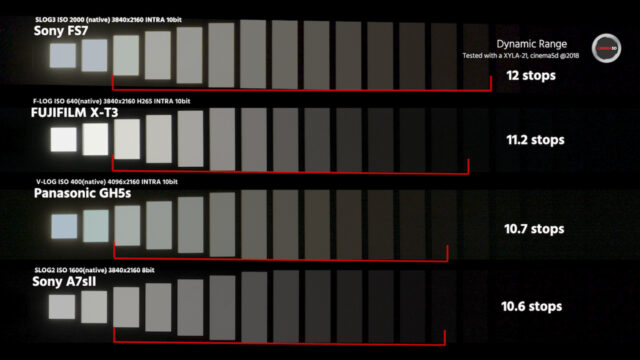
The GH5S comes up a bit short with respect to dynamic range as well, which is why the camera is not Netflix-approved like its younger sibling the BGH1, though endowed with the same micro four thirds sensor. Panasonic was able to squeeze one more stop of dynamic range out of V-Log L in the BGH1.
In a two-part video series, Ping Hung Wong, HKSC explains how understanding its dynamic range limitations can help you get the most out of the GH5S.
Finally, if you’re after either higher-resolution or a full-frame sensor, other attractive camera options have become available since the launch of the GH5S.
Music credit (video): The Carousel Twins, Luella Gren (epidemicsound.com)
The GH5S was already a very solid camera chock full of robust features from its initial release, but firmware 2.0 and 2.2 make it even better. With the addition of RAW and improved autofocus, do you think the GH5S is still a contender in 2021? Share your thoughts in the comments below.
